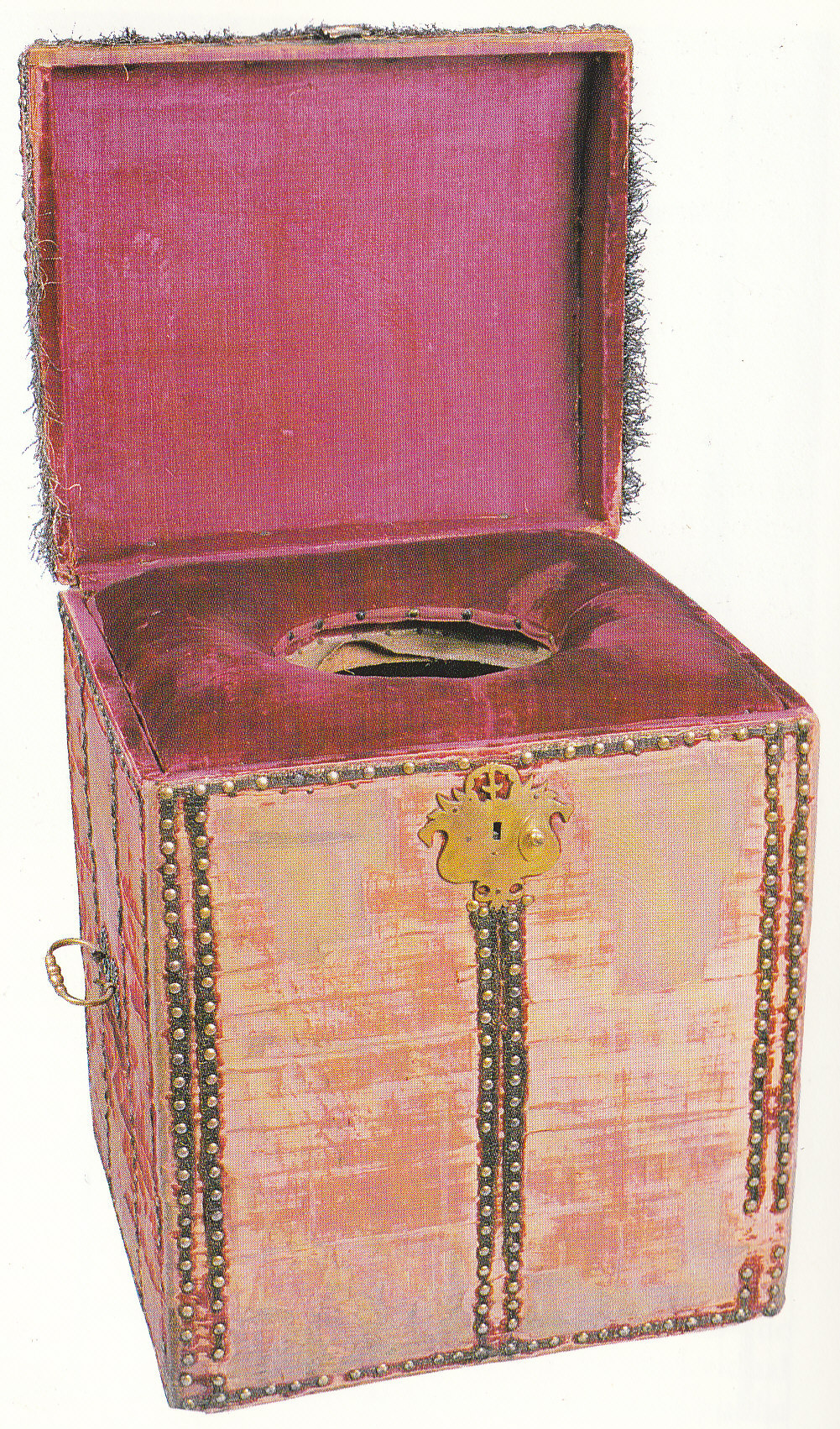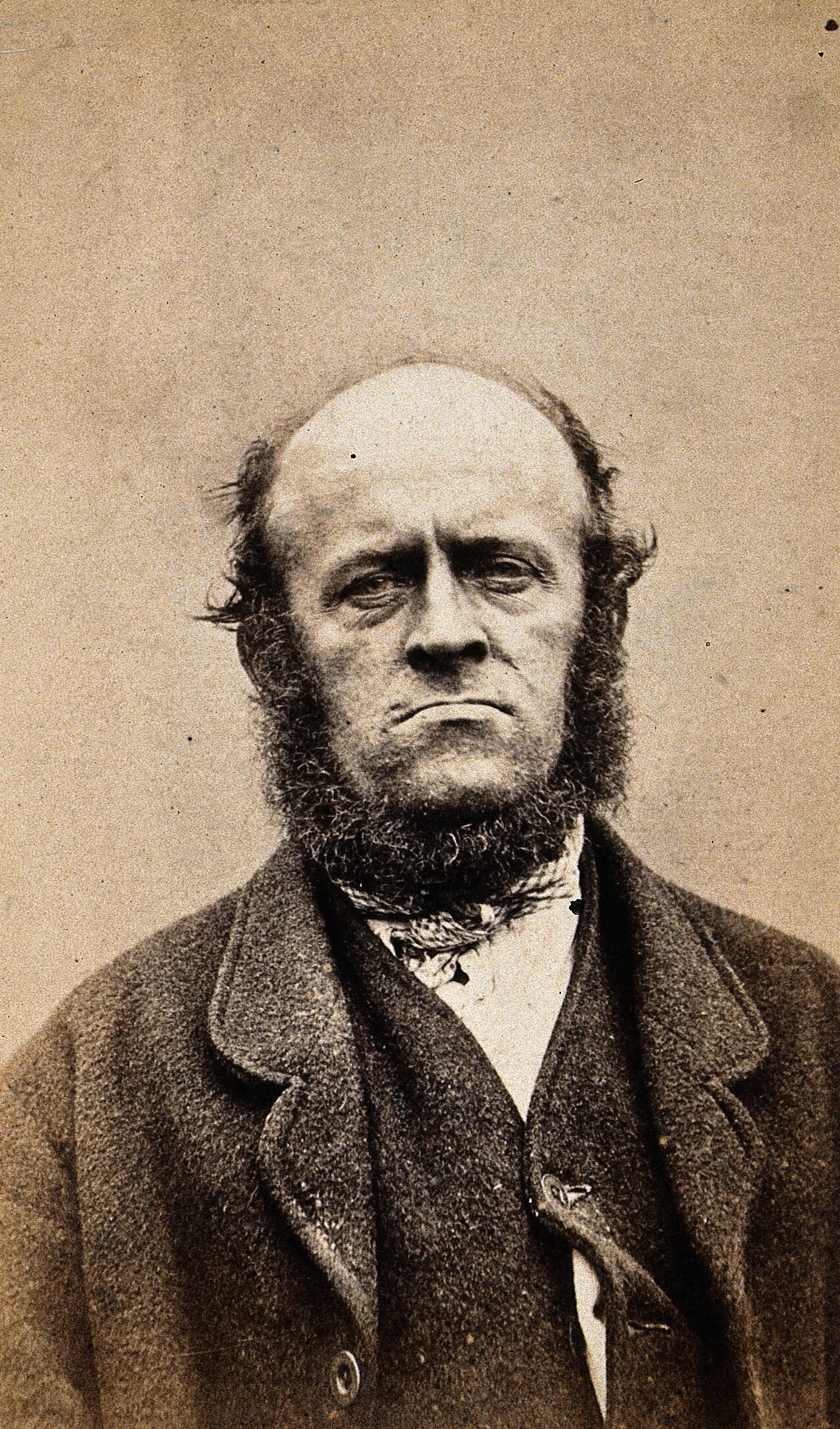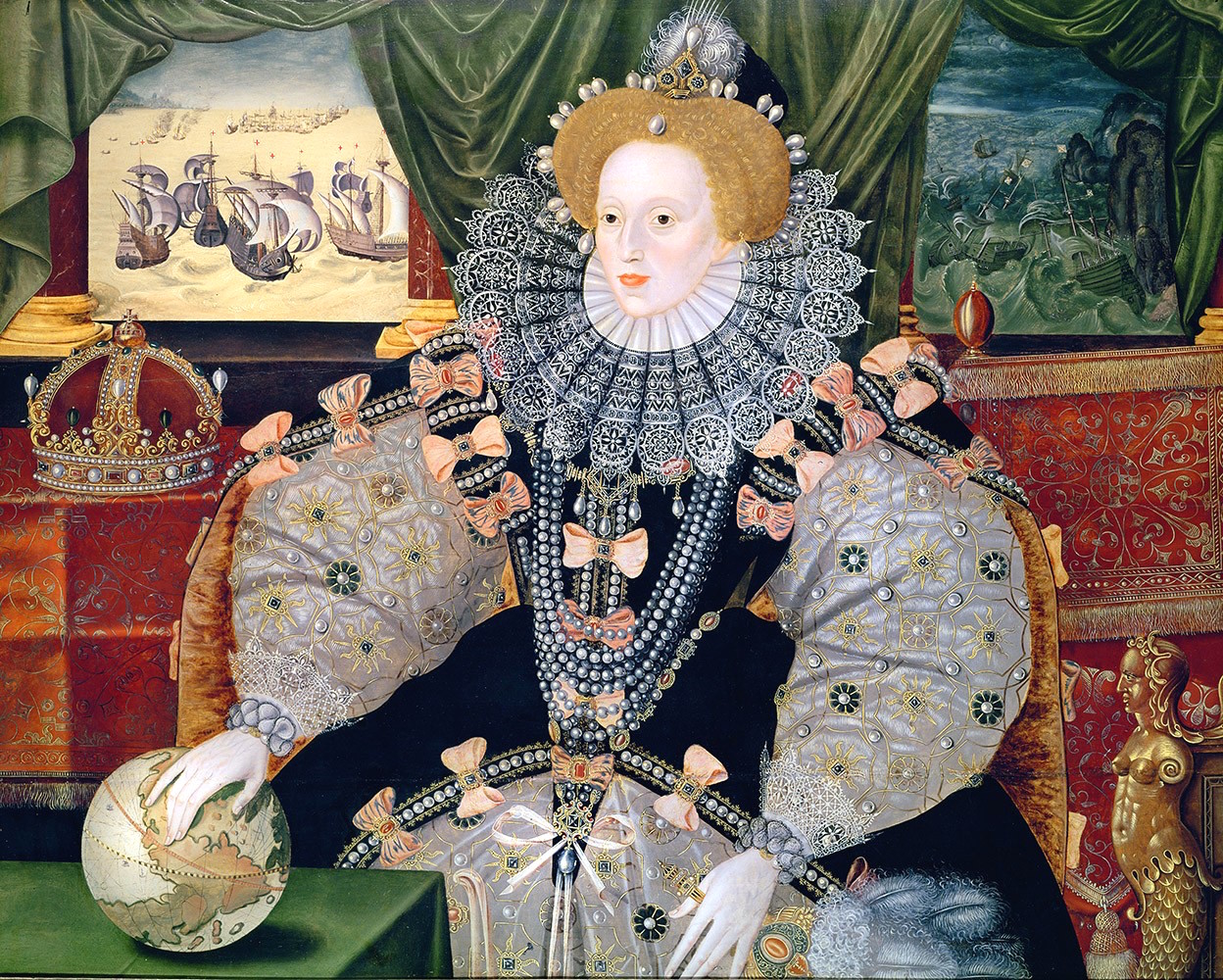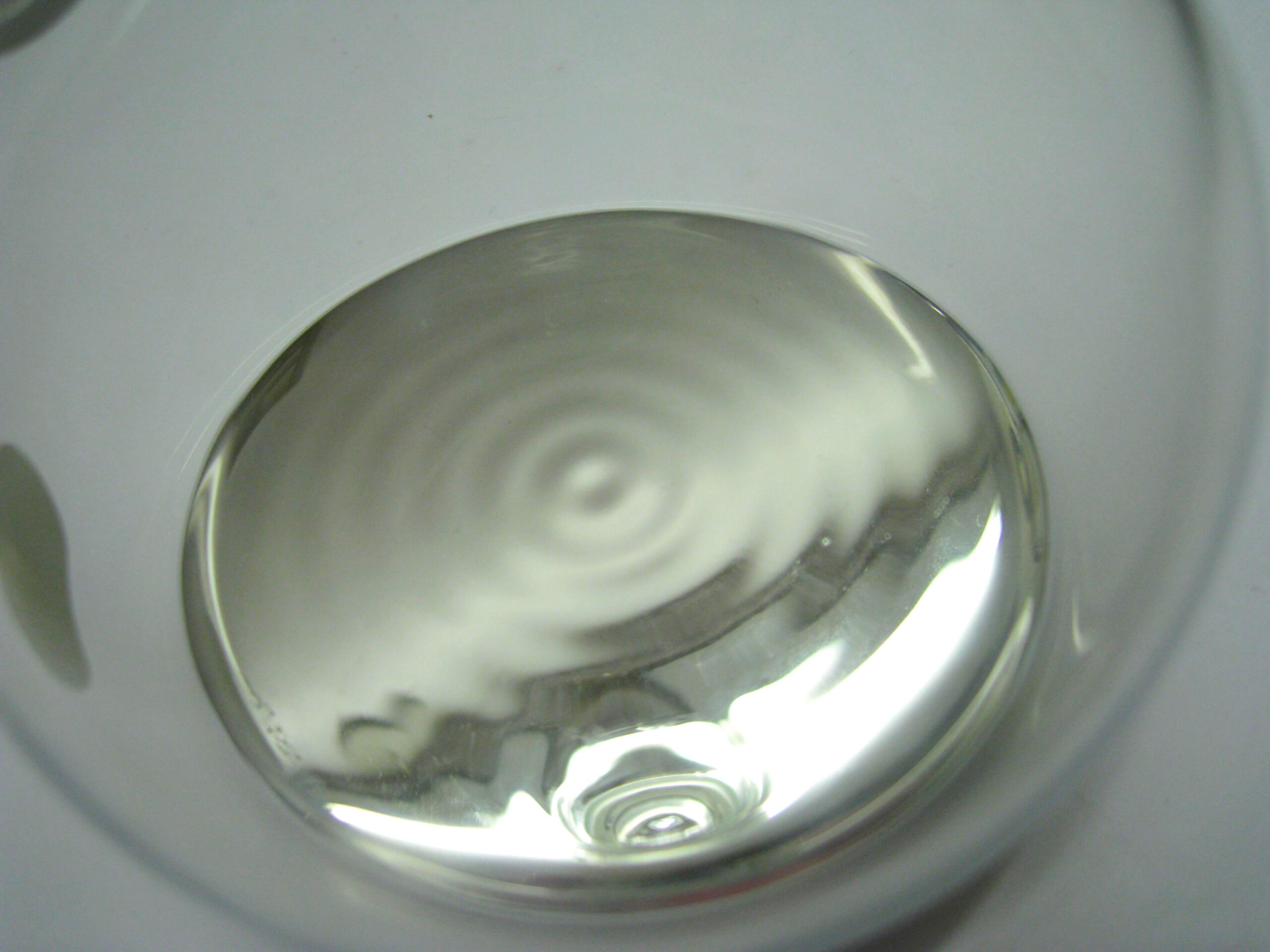
I don't feel awake in the morning until I've showered, combed my hair, and brushed my teeth. I can't imagine going a single day without doing each of those things, let alone an entire year — or a lifetime.
However, that's exactly what life looked like for many of our ancestors. Obviously, they had significantly different standards than we do now.
Before the advent of modern plumbing, electricity, and medical research, personal hygiene was, um, slightly gross (to put it lightly). Prior to the conveniences we enjoy on a daily basis today, people had to resort to some pretty strange practices for cosmetics, dentistry, and even feminine care.
No wonder the average life expectancy in the Middle Ages was a mere 30 years (this was the time of the plague, after all).
Trust me, if you think portable toilets are gross, wait until you see what we used as commodes back in Victorian times!
1. People Used To Pee And Poo In Pots Kept Under Their Beds

If you were to wake up in the middle of the night realizing that you had too much water before going to bed, you wouldn't run down the hall to the bathroom — you'd reach right under the bed to pull out the chamber pot. When you were finished, you'd just stash the bowl right back where you got it.
Although there's a popular belief that chamber pots would be emptied out the window and right onto the street, folks weren't really quite that gross back in the day, according to Slate.
2. If You Had A Toothache Or A Cavity, You'd Just Pull Out Your Tooth

If you think going to the dentist is a scary proposition in our modern age, imagine visiting one in the era before anesthesiology.
Dentists didn't even exist in the Middle Ages. According to the timeline provided by the American Dental Association, you would have to visit a barber.
The barber was responsible not just for cutting hair, but also pulling teeth, letting blood, and performing some other minor surgeries. If basic, noninvasive treatments for toothaches didn't fix the problem, there was one solution: the tooth was coming out… and without the help of Novocain.
3. Someone Was Paid To Wipe The King's Bum

If you think your job is bad, just be grateful you aren't the "Groom of the King's Close Stool." This position carried the responsibility of following the king around with his portable commode and washing instruments. The groomsman assisted the king with his personal business and the, um, cleaning afterward.
It may sound like the least respectable position in the court, but it was actually a coveted role given to the sons of nobility. As historian David Starkey explained to the Telegraph, the Groom of the Stool was often one of the king's most trusted advisors and confidants.
4. Peasants Had To Use Leaves For Toilet Paper

Peasants obviously didn't have it as good as the king. Instead, they resorted to using dried leaves as toilet paper.
5. People Rarely Changed Their Clothes

Several authors have claimed that even royalty would be prone to repeating outfits. King James VI of Scotland went months at a time without changing his clothes. He even slept in them. Often, people only had four outfits, one for each season.
Princesses were also known to not change their dress for months at a time.
6. If You Were Feeling Sick, You Might Have A Leech Drain Your Blood

The cure for most ailments during this time was bloodletting through leeches, as it was believed that blood was stagnant, not circulating.
If you were ill or had a cold, the blood would be fed to a leech — or you could go with the alternative of bloodletting with a dirty knife.
7. Wigs Were Usually Infested With Lice

The periwigs you see in portraits from the 1500s to the 1800s may seem beautiful and grand — until you learn most of them were likely covered in hundreds of lice and nits.
8. Eagle Dung Was Present At Most Births

Forget the epidural. When a woman was going through childbirth, she had few comforts.
According to medieval ages enthusiast Rosalie Gilbert, the mother was given oil and vinegar to drink, while poultices made of eagle dung were used to ease her pain.
9. Tampons And Pads Were Made Of Napkins Wrapped Around Moss

Rosalie also dishes on how medieval women on their period would fashion tampons and pads out of whatever materials they had within reach.
Often, this meant old rags and cloths wrapped around naturally absorbent moss.
10. Urine Was Used For Washing Faces

Noble women took excellent care of their faces, washing nearly every day… with urine. It probably seems disgusting, but they firmly believed in urine's antiseptic ability.
Shockingly, there are some scientists today who still recommend urine as a cure for acne!
11. A Mixture Of Potassium And Chicken Droppings Were Used To "Cure" Baldness

Even back in the 17th century, baldness was considered embarrassing for a man.
The Telegraph unearthed advice from a man named Peter Levens written way back in 1654 for those wanting a more permanent cure than a lice-infested wig: Rubbing a concoction made of potassium and chicken droppings into the scalp.
12. Women Used Ceruse Lead Powder For Cosmetics

Women in the Elizabethan era were very particular with their appearances. The most popular cosmetic foundation was ceruse lead powder. Obviously, the lead was poisonous, but it gave them that enviable creamy white complexion.
Queen Elizabeth I would not wash her face. Instead, she piled new layers of ceruse lead over the previous layers as soon as she woke up. As the Guardian points out, you can see the harmful effects on display in portraits of her majesty over the years.
13. Sulphur Was Used To Get Rid Of Freckles

Freckles were considered disgusting, unsightly blemishes. Sulphur would be vigorously rubbed into the skin daily to minimize their appearance.
14. Everyone Bathed In The Same Water

Showers and tubs were rarely found in the home. When people eventually did bathe, it was usually in a common area where hundreds of others had bathed.
15. Maybe Your Tooth Hurts Because Of A Tooth Worm?

Physicians in the 15th century prescribed a remedy for toothaches that, according to studies, involved lighting a candle or early version of a cigarette, then letting the smoke fill your mouth.
Then, you would lean your head over a warm bowl of water so the pain-causing tooth worms could fall in.
16. The Tudor House Toilets Were A Breeding Ground For Disease

Tudor house toilets, like the one pictured here, were rarely cleaned or emptied. They became a breeding ground for infection and disease.
17. Painfully Hot Pokers Were Used On Ailing Body Parts

To protect wounds and cuts from infections, red-hot pokers were used to cauterize the flesh. This was probably just as painful as the initial injuries.
Medical studies have found that this method remained a popular remedy during times of war, though it would usually end with the wounds becoming even more infected.
18. Wigs Were Shaped With Animal Fat, Making Them Highly Flammable

If you look at portraits of Marie Antoinette and other women of the period, their wigs may seem glamorous, but they probably smelled terrible.
Historians Loretta Chase and Susan Holloway Scott revealed that wigmakers back then shaped the wigs with animal fat, making them smelly and prone to catching fire.
19. Water Tanks Were Lined With Lead

Clean water was a rarity in the past. Unfortunately, it was often stored in tanks lined with lead, which caused frequent cases of lead poisoning.
20. Teeth Were Brushed With A Paste Of Burnt Herbs

Teeth whitening? Not exactly. You were lucky if you made it to adulthood with a full smile.
Toothpastes were made of burned herbs like rosemary and mint, while wine was a common mouthwash, according to the dental-health timeline by Spear Education.
21. Mouse Skins Were Used To Shape Eyebrows

A woman's brow was considered a very important part of her appearance.
Bloggers for British Library explain that women would shape the perfect brow with delicately placed mouse skins.
22. Rush Floors Made People Vulnerable To Infection And Disease

In How to Be a Tudor: A Dawn-to-Dusk Guide to Tudor Life, author Ruth Goodman quotes a particularly horrifying sentiment from Erasmus, a Medieval Catholic scholar, who wrote this first-hand description of rushes:
"Rushes [are] occasionally renewed, but so imperfectly that the bottom layer is left undisturbed, sometimes for twenty years, harbouring expectoration, vomiting, the leakage of dogs and men, ale droppings, scraps of fish, and other abominations not fit to be mentioned."
I don't even want to imagine what the "abominations not fit to be mentioned" could possibly have been.
23. Nosegays Were Used Instead Of Deodorant

Deodorants are quite the modern invention. Bouquets of nosegays were carried to mask the malodorous smell of bodies, although pretty much everyone smelled funky.
24. Urine Was Used As An Antiseptic

The most common antiseptic during Victorian times was wine (it does contain alcohol). According to Victorian Web, surgeons from that time such as Joseph Lister believed boiling hot urine was the best way to sterilize an object.
25. Poisonous Mercury Was Used To Treat STDs

The Journal of Military and Veterans' Health explains that before the introduction of penicillin, mercury was a common "remedy" for several diseases, especially STDs like syphilis. Of course, this was long before people knew that mercury was poisonous.
26. Beds Were Covered In Pests, And Even Bird Droppings

Just as the floors of a peasant's house could make them vulnerable to infection and disease, roofs were often thread-bare and could hardly protect beds from bird droppings.
27. Waste Was Just Thrown Into Cesspits

So, what do you do with those chamber pots when you're ready to empty them? Just throw their content into a hole in the backyard, of course!
The stench would be unbelievably putrid, and the cesspits served as a breeding grounds for fatal diseases.
28. Laundry Was Washed With A Mix Of Lye And Urine

According to the timeline from Australia's Hygiene for Health, caustic lye and unsterile urine were believed to be two of the best options for rinsing clothes throughout several periods in history.
29. Fingers Were Used Instead Of Forks

Although the timeline from Eating Utensils shows rudimentary versions of forks and spoons throughout history, most of the poorer population in medieval days simply relied on eating with their (likely unwashed) hands.
30. There Were No Such Things As "Clean" Surgical Instruments

We've already established that urine was one of the most popular disinfectants of the time, so imagine the infection after an operation with a urine-drenched scalpel!
Please SHARE with someone who might be interested in the bizarre medical practices of the past.




